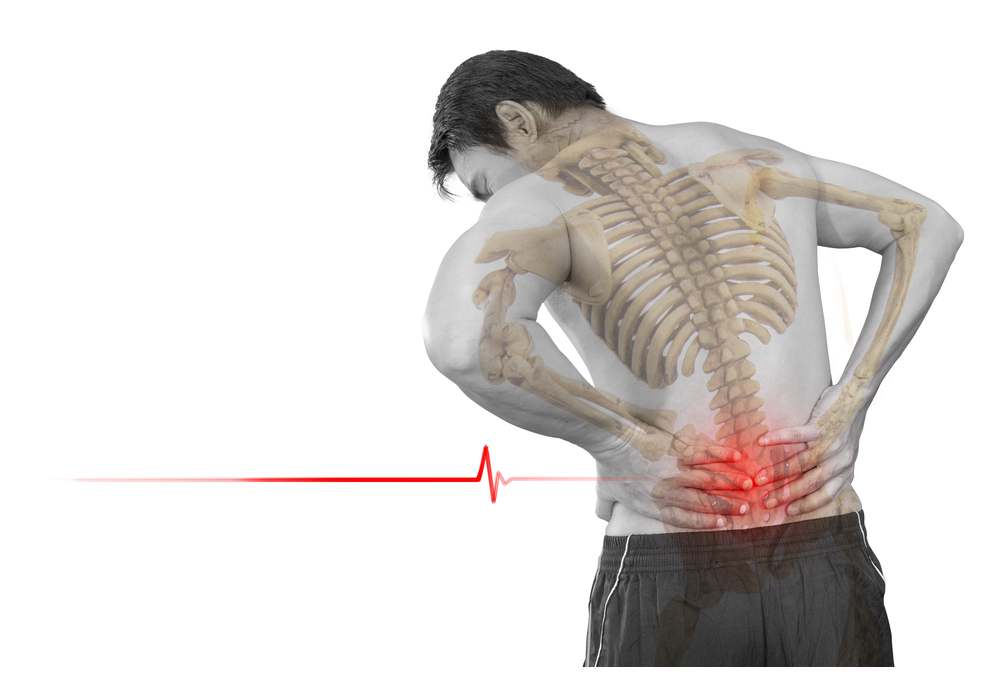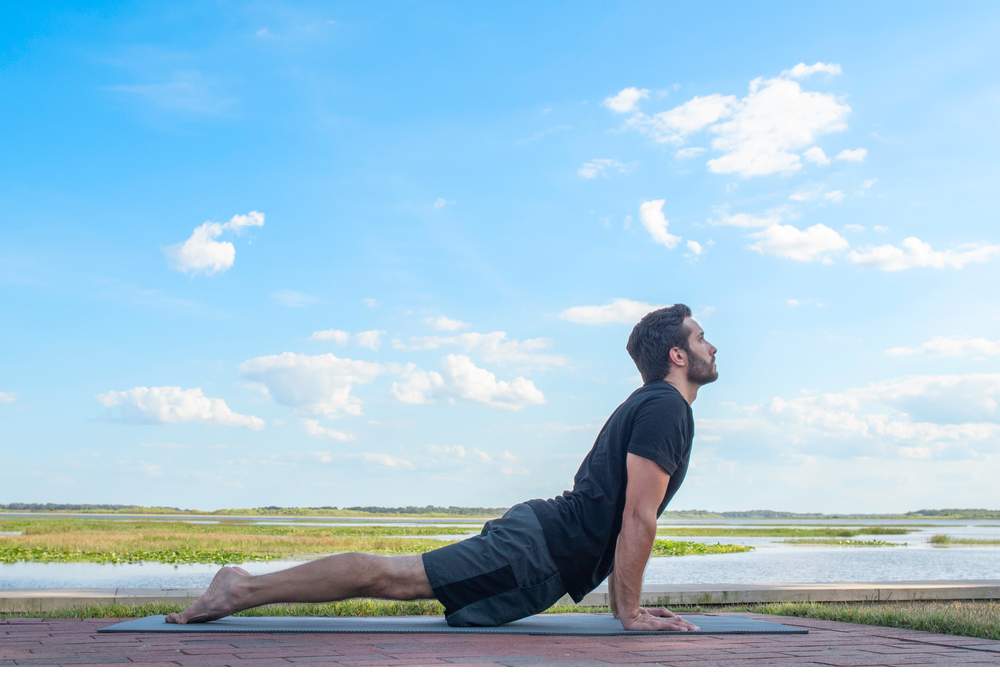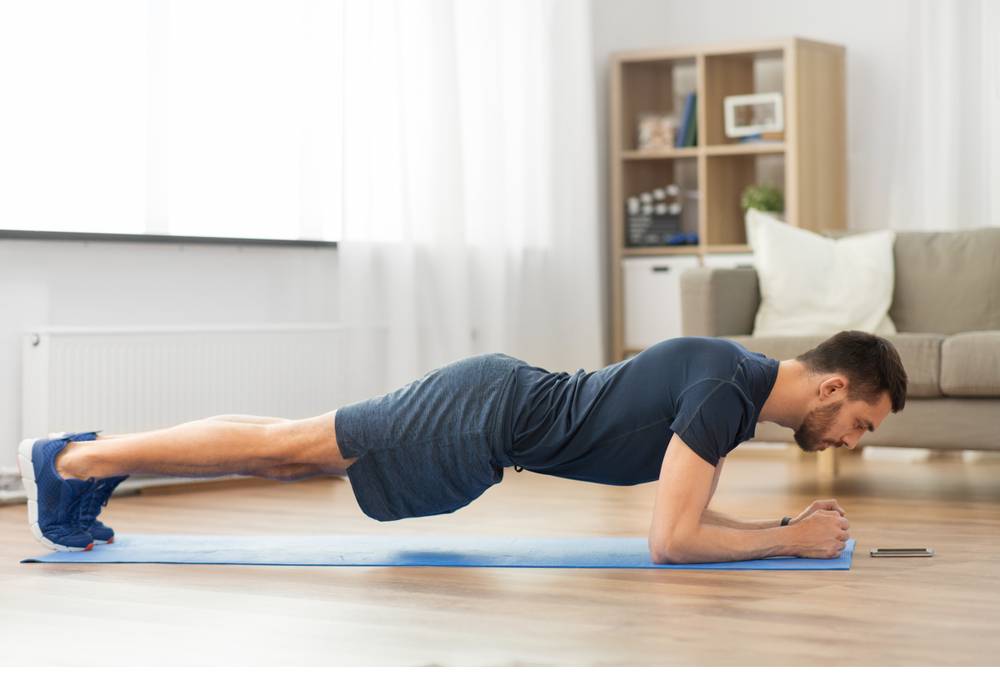 Sometimes back pain can happen to you because of something as simple as how you carry yourself. It doesn’t take a serious injury or health condition to leave you dealing with chronic back pain. In fact, many people experience back pain simply due to bad posture. While we obviously depend on our legs and feet to get us where we need to go, we owe a lot to our spine and back to help keep us upright, too. A strong posture and supportive nearby muscles can also help reduce your risk for injuries and other issues that might contribute to back pain. So, what do you do when your back pain is caused by poor posture? It can take time and energy to get back to a healthy posture and reduce back pain. You can work with a physical therapist and practice exercises at home to help improve your posture and reduce back pain.
Sometimes back pain can happen to you because of something as simple as how you carry yourself. It doesn’t take a serious injury or health condition to leave you dealing with chronic back pain. In fact, many people experience back pain simply due to bad posture. While we obviously depend on our legs and feet to get us where we need to go, we owe a lot to our spine and back to help keep us upright, too. A strong posture and supportive nearby muscles can also help reduce your risk for injuries and other issues that might contribute to back pain. So, what do you do when your back pain is caused by poor posture? It can take time and energy to get back to a healthy posture and reduce back pain. You can work with a physical therapist and practice exercises at home to help improve your posture and reduce back pain.
How Bad Posture Can Contribute to Back Pain
Between sitting for long hours at a desk or marathoning a tv show on your comfy couch, your posture can really take a hit. Good posture is more than just sitting up straight while sitting and standing. Your spine and postural muscles need proper support and engagement to stay healthy and function properly. When you regularly engage in poor posture, you end up putting too much pressure on parts of your back. Poor posture can reduce your spine’s ability to effectively absorb shock from everyday movements and activities. Chronic poor posture can also lead to misalignments in the spine that can cause pain and discomfort. When your vertebrae are not properly aligned, it can disrupt healthy functioning elsewhere in the body and impact your nerves, causing tingling and numbness, too. Over time, poor posture can also start to disrupt your sleep, and you might have difficulty getting into a comfortable position that doesn’t cause you pain.
Benefits of Stretches & Exercises for Improving Posture
 If you deal with back pain because of poor posture, then you can take an active role in improving your posture and reducing your pain. Stretches and exercises offer a wide range of benefits to your whole body.
If you deal with back pain because of poor posture, then you can take an active role in improving your posture and reducing your pain. Stretches and exercises offer a wide range of benefits to your whole body.
Increase Body Awareness
When you focus on stretching and exercising, you will target certain areas and muscle groups. This will help increase your body awareness and keep things like your posture more at the front of your mind. Stretching and exercising require mental energy, too, so you can actively retrain your brain on ways to help support a healthy posture. Learning how to manage your body more effectively can also help you prevent injuries and back pain from bothering you again. Regular stretches and exercises can also improve your overall self-esteem and focus on improving your posture, spine, and joint health for more total-body awareness and understanding.
Realign Spinal Joints
Maintaining a neutral spine helps your whole body function more effectively. When spinal joints, also known as vertebrae, become misaligned due to poor posture, you can experience pain and discomfort. When you stretch your back and postural muscles, you allow for more space for your spine to function. Sitting hunched over or standing with a swayback can disrupt healthy alignment. Exercising the muscles that support your spine will help them support a proper posture. Many exercises target muscles that support your core and spine and help you straighten your spine. Maintaining a healthy posture with your weight on the balls of your feet, your knees unlocked, and your chin raised all contribute to a healthy posture and spinal alignment.
Loosen Up Muscles
Stretching and exercising both offer great benefits for your muscles. You need strong muscles to help you move around, maintain your balance, stay flexible, and stabilize your bones and joints. Stretches will target muscles to keep them warmed up and promote flexibility. Exercises target various muscle groups and help them grow stronger and better able to support your body. You rely on your muscles for everything from sitting up straight to walking up and down a flight of stairs. Strong, healthy muscles keep you in shape and prevent aches and pains from a more sedentary lifestyle.
Strengthen Your Core
Your postural muscles don’t just include the muscles in your shoulders and back. Your core also plays a large role in how you carry yourself. A strong core will help you sit up straight and can also help prevent back injuries. Your abdominal muscles and other parts of the core help keep you stabilized, which allows you to twist, turn, and change directions without losing your balance. A weak core will not be able to support you engaging in good posture like standing or sitting straight for long periods of time. You must engage your core in order to maintain a healthy posture, so targeting core muscles with strengthening exercises will help you improve your posture and reduce back pain.
Try These 7 Exercises to Improve Your Posture & Reduce Back Pain
 Take an active role in reducing your pain and improving your overall health and wellness. Whether you sign up for a gym membership or designate a spot in your home for workouts, you can improve your overall health and wellness with as little as 10 minutes of activity each day. Check out these seven stretches and exercises that can help you reduce your back pain and improve your posture.
Take an active role in reducing your pain and improving your overall health and wellness. Whether you sign up for a gym membership or designate a spot in your home for workouts, you can improve your overall health and wellness with as little as 10 minutes of activity each day. Check out these seven stretches and exercises that can help you reduce your back pain and improve your posture.
Child’s Pose
Child’s pose is a common yoga posture that helps lengthen your spine and offers you a chance to take deep breaths and focus on your body. To get into child’s pose, you will start with your hands and knees on the floor. Make sure your knees are shoulder-width apart and angle your feet toward one another so that your big toes are touching. Then start to crawl forward with your hands until your arms are extended straight out in front of you. Gently drop your hips backward toward your feet until your buttocks can rest on your heels. Place your forehead on the floor and take 5 to 10 deep breaths in this position.
Cat-Cow Pose
After child’s pose, you can move into what is known as the “cat-cow pose.” Move into a position on your hands and knees where your knees are directly below your hips, and your wrists and elbows are directly in line with your shoulders. For this pose, make sure you start with your head and neck in a neutral position, like your spine is in a straight line and your eyes are looking at the floor below you. First, you will move into the cat phase of the pose, where you engage your core to tuck your tailbone and arch your back so that your spine moves toward the ceiling. Drop your chin to your chest and try to bring your ears in line with your shoulders or biceps. Take 5 to 10 deep breaths before returning to the starting position. Then you will move into the cow phase of the pose, where you lift your chin and chest toward the ceiling while dropping your stomach toward the floor. Take 5 to 10 deep breaths in this position while you focus on gazing toward the ceiling and gently stretching your shoulders away from your ears.
Cobra Pose
Cobra pose starts from a position lying face down on the floor or a mat. Place your hands beneath your shoulders and engage your core and back muscles as you press your chest up and away from the floor. As you lift your shoulders, bring your chin up and tilt your head backward toward your spine. This pose helps to strengthen your upper back and relieves built-up tension on your spine.
Wall Sits
Wall sits offer a simple way to reintroduce healthy posture after you have been sitting on your sofa or hunched over your desk for a long period of time. Stand with your back against the wall and slowly slide down as if you were sitting on a chair beneath you. Keep your knees bent at a 90-degree angle and your feet firmly planted on the ground. Then gently press your lower back into the wall. Take 5 to 10 deep breaths while you focus on the feeling of the back of your head, your shoulder blades, and your lower back pressed against the wall in this posture. You can hold this position for a minute, take a break, and then move into the position again for strength building and pain relief.
Bird Dog
The bird dog exercise offers a twist on strengthening your core by including a balancing activity. Start on your hands and knees with a straight line through your shoulders, wrists, and hands, and from your hips to your knees. Engage your core muscles while you slowly raise your right hand so it extends out in front of you, while you also raise your left leg into a straight line behind you. Hold this position for 5 seconds, then slowly return to your starting position before swapping to your left arm and right leg.
Reverse High Five
Take a break from sitting at your desk all day or marathoning the latest tv show with a reverse high five. This simple exercise will take a few minutes of your time and help reduce the effects of slouching and poor posture. Stand with your feet hip-width apart and in a healthy posture with your chin up and your shoulders back. Raise your hands so that your palms are in front of your shoulders like you are giving someone a double-high five. Then turn your hands around so they face behind you. Then press your hands in small, repeated movements like you are giving someone a high five behind you.
Planking
Planking might look simple, but it engages your entire body and can help you build strength and relieve pain. Start lying on your stomach and place your hands out in front of you and your elbows under your shoulders. Gently press your chest up and away from the ground while you tuck your toes and lift your lower body off the ground. A plank position involves your whole body lifted off the ground with just your toes, palms, forearms, and elbows on the ground. Maintain a straight back and keep your head and neck aligned with your back for a plank. You can hold this plank pose for 30 seconds at a time and gradually increase it to one minute at a time.
Physical Therapy for Back Pain and Improving Your Posture
You can work with a physical therapist to help reduce your back pain and improve your posture. Physical therapy offers a safe space to learn and work through stretches and exercises with a movement expert who helps ensure you engage in proper technique and don’t overload your body. A physical therapist will help you go through stretches and exercises that strengthen your muscles and help improve your flexibility and balance, all of which help support a healthy posture. From yoga stretches to cardio exercises, a physical therapist can help you identify effective ways to improve your posture and experience less pain in your daily life. Learn how to build your core, strengthen your back, and loosen tight hips during physical therapy. Your physical therapist can also help you counteract poor posture with routines to help you maintain awareness and keep your body alert and aligned.
Visit AICA Orthopedics in Conyers to learn more about safe and effective exercises to improve your posture and reduce back pain. Our team of doctors at AICA Orthopedics includes orthopedic doctors, chiropractors, neurologists, and physical therapists who work together to provide you with comprehensive care. You will receive a personalized treatment plan designed to address your specific symptoms and the needs of your body. Learn how making small, incremental changes can have a big impact on your overall health and well-being. Schedule an appointment with your Conyers physical therapist at AICA Orthopedics to get started on an individualized plan just for you!
